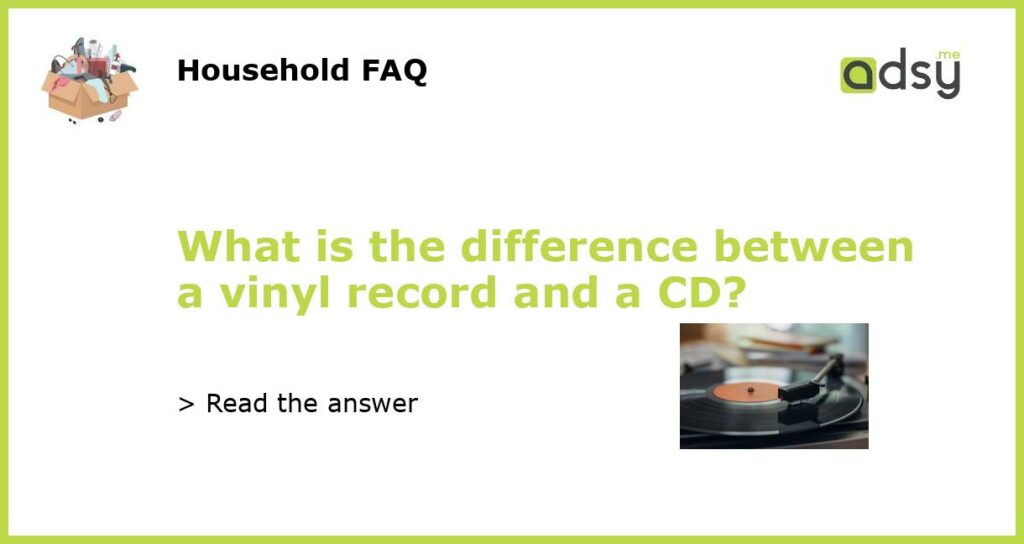The Basic Differences
When it comes to the difference between a vinyl record and a CD, the most obvious distinction lies in the physical format. Vinyl records are large discs made of polyvinyl chloride (PVC), while CDs are small, circular discs made of polycarbonate. This difference in material has a noticeable impact on the overall aesthetic and user experience.
Furthermore, vinyl records are analog audio recordings, meaning that the sound is stored in physical grooves on the record and read by a needle or stylus. On the other hand, CDs are digital audio recordings, with the sound information stored as 0s and 1s in a digital format on the disc.
Sound Quality
One of the main points of debate when comparing vinyl records and CDs is the sound quality. Many audiophiles argue that vinyl records offer a more authentic and warm sound due to the analog recording process. Vinyl’s analog nature allows for a more continuous and detailed sound, with a unique warmth that some listeners prefer.
On the other hand, CDs provide a cleaner and more precise sound. The digital format allows for a high level of accuracy and clarity, eliminating the imperfections often found on vinyl records, such as pops, cracks, and surface noise. CDs also have a wider dynamic range, meaning they can reproduce a broader range of frequencies and volumes compared to vinyl.
Durability and Lifespan
When it comes to durability and lifespan, CDs have the advantage. Vinyl records are more susceptible to wear and tear, as the needle used to play them can cause gradual degradation of the grooves. The surface of the record can also scratch easily, leading to losses in sound quality over time.
On the other hand, CDs are generally more resistant to physical damage. With proper handling and storage, CDs can last for several decades without any noticeable deterioration. Additionally, CDs are not affected by dust or fingerprints in the same way as vinyl records, which can cause surface noise.
Artwork and Packaging
Vinyl records are known for their large album covers and intricate artwork. The size of vinyl records allows for more detailed and visually appealing album designs, often featuring artwork, lyrics, and additional information. Many collectors and enthusiasts appreciate the tactile nature of vinyl records and the experience of flipping through a collection of album covers.
On the other hand, CDs have smaller packaging and artwork. While they still feature cover artwork and sometimes include booklets with lyrics, CDs do not provide the same level of visual experience as vinyl records. However, the compact size of CDs allows for easier storage and transportation.
Collectibility and Market Value
The collectibility and market value of vinyl records and CDs can vary significantly. Vinyl records have long been a popular collectible item, and certain rare or limited edition records can fetch high prices in the collector’s market. The age, condition, and rarity of vinyl records often contribute to their value.
While there is a market for collectible CDs, the value of most CDs tends to be lower compared to vinyl records. This is partly due to the mass production of CDs and their relative newness in comparison. However, certain limited edition or out-of-print CDs can still hold value among collectors.


![Hans Zimmer - The Classics. 2LP Limited Edition [VINYL]](https://m.media-amazon.com/images/I/515ic+3zkvL.jpg)
![Gold [VINYL]](https://m.media-amazon.com/images/I/412V5CqjjnL.jpg)
![All Over The World: The Very Best Of Electric Light Orchestra [VINYL]](https://m.media-amazon.com/images/I/61oLgTtzb9L.jpg)
![Legend [VINYL]](https://m.media-amazon.com/images/I/51f87rHQ-bL.jpg)
![Rumours [VINYL]](https://m.media-amazon.com/images/I/41jOOB2R17L.jpg)